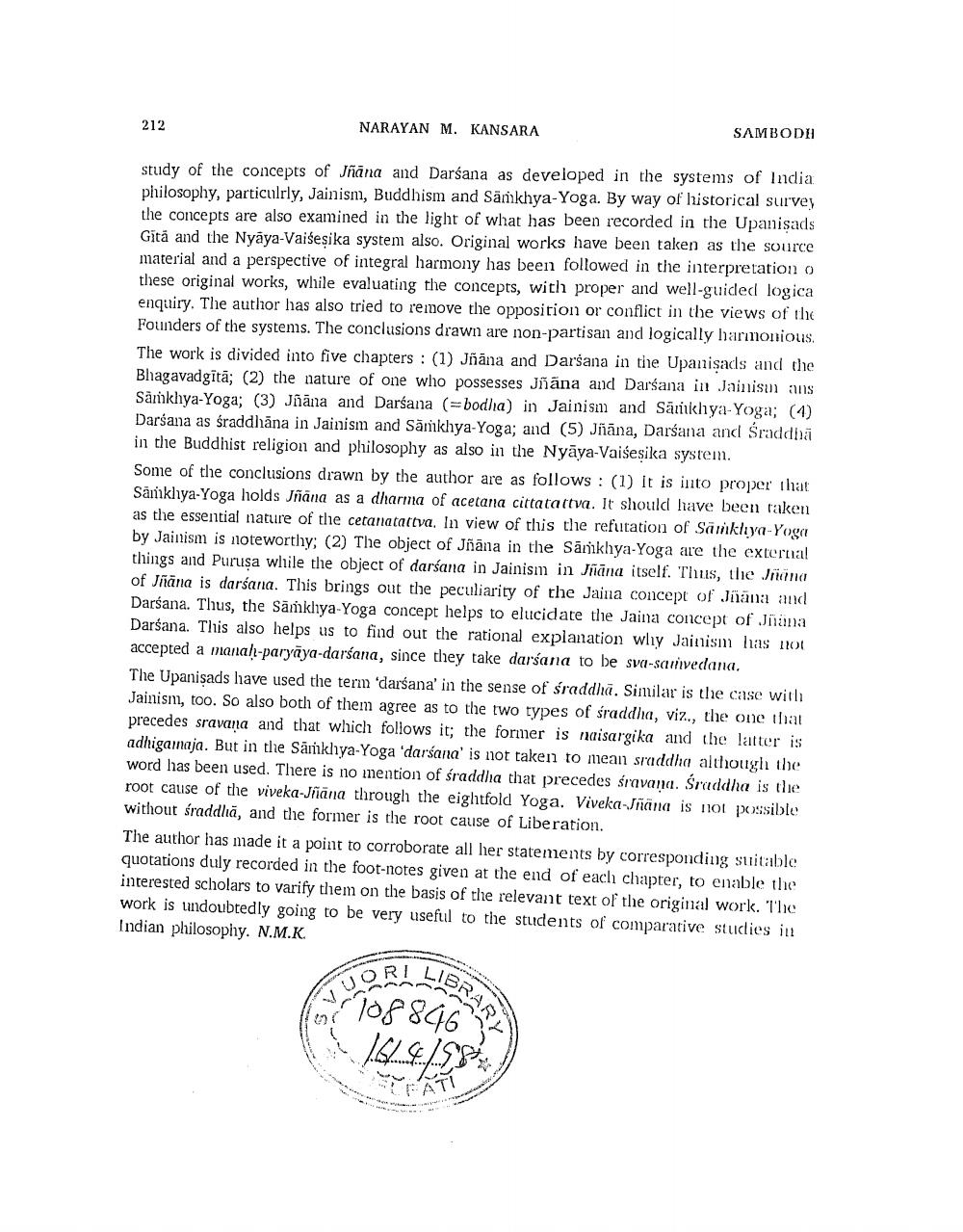________________ 212 NARAYAN M. KANSARA SAMBODH study of the concepts of Jhana and Darsana as developed in the systems of India philosophy, particulrly, Jainism, Buddhism and Sankhya-Yoga. By way of historical survey the concepts are also examined in the light of what has been recorded in the Upanisads Gita and the Nyaya-Vaisesika system also. Original works have been taken as the source material and a perspective of integral harmony has been followed in the interpretation o these original works, while evaluating the concepts, with proper and well-guided logica enquiry. The author has also tried to remove the opposition or conflict in the views of the Founders of the systems. The conclusions drawn are non-partisan and logically harmonious. The work is divided into five chapters : (1) Jnana and Darsana in the Upanisads and the Bhagavadgita; (2) the nature of one who possesses Jnana and Darsana in Jainism ans Sarnkhya-Yoga; (3) JMana and Darsana (=bodha) in Jainism and Sarikhya-Yoga; (1) Darsana as sraddhana in Jainism and Sarikhya-Yoga; and (5) Jnana, Darsana and Sraddha in the Buddhist religion and philosophy as also in the Nyaya-Vaisesika system. Some of the conclusions drawn by the author are as follows: (1) It is into proper that Samkliya-Yoga holds Jnana as a dharma of acetana cittatattve. It should have been taken as the essential nature of the cetanatattva, In view of this the refutation of Sarkliya-Yoga by Jainism is noteworthy: (2) The object of Jnana in the Sankhya-Yoga are the external things and Purusa while the object of darsana in Jainism in Jiana itself. Thus, the rana of Jhana is darsana. This brings out the peculiarity of the Jaina concept of Jiana and Darsana. Thus, the Sakliya Yoga concept helps to elucidate the Jaina concept of Jnana Darsana. This also helps us to find out the rational explanation wly Jainism las not accepted a manah-paryaya-darsana, since they take darsana to be sv-savivedana. The Upanisads have used the term 'darsana' in the sense of sraddhi. Similar is the case with Jainism, too. So also both of them agree as to the two types of sraddha, viz., the one that precedes sravana and that which follows it; the former is naisargika and the latter is adhigamaja. But in the Samkhya-Yoga 'darsana' is not taken to mean sraddha although the word has been used. There is no mention of Sraddha that precedes fravana. Sraddha is the root cause of the viveka Jriana through the eightfold Yoga. Vivekanand is not possible without sraddha, and the former is the root cause of Liberation. The author has made it a point to corroborate all her statements by corresponding suitable quotations duly recorded in the foot-notes given at the end of each chapter, to enable the interested scholars to varify them on the basis of the relevant text of the original work. The work is undoubtedly going to be very useful to the students of comparative studies in Indian philosophy. N.M.K. VORILIA LIBRA ISRAR 708806 S6 4.198 ATT




